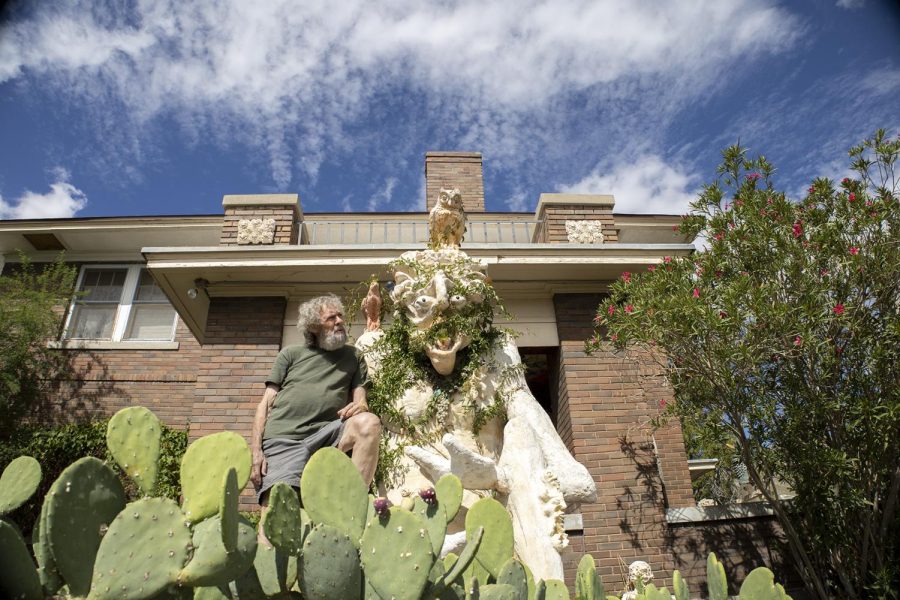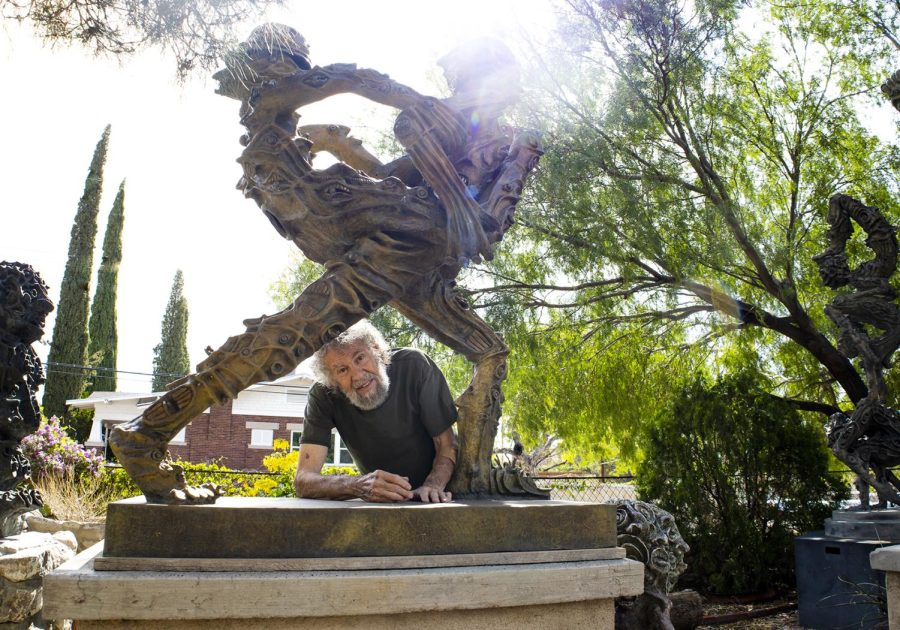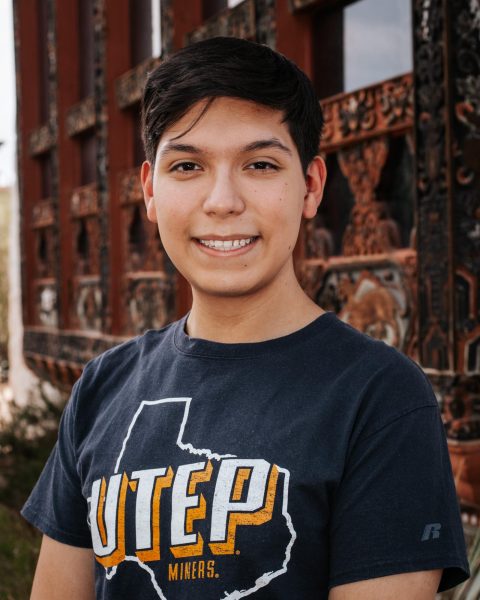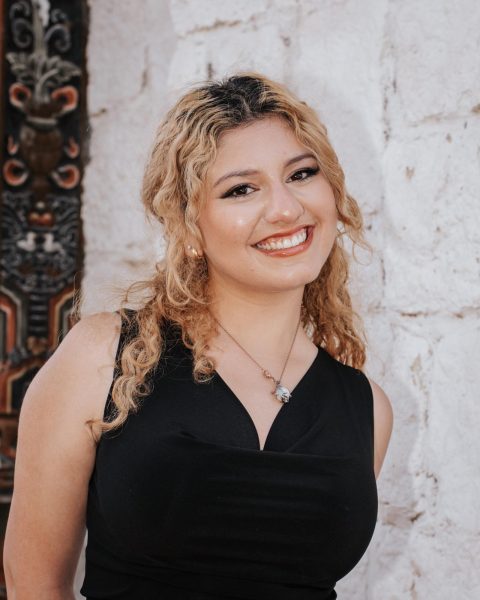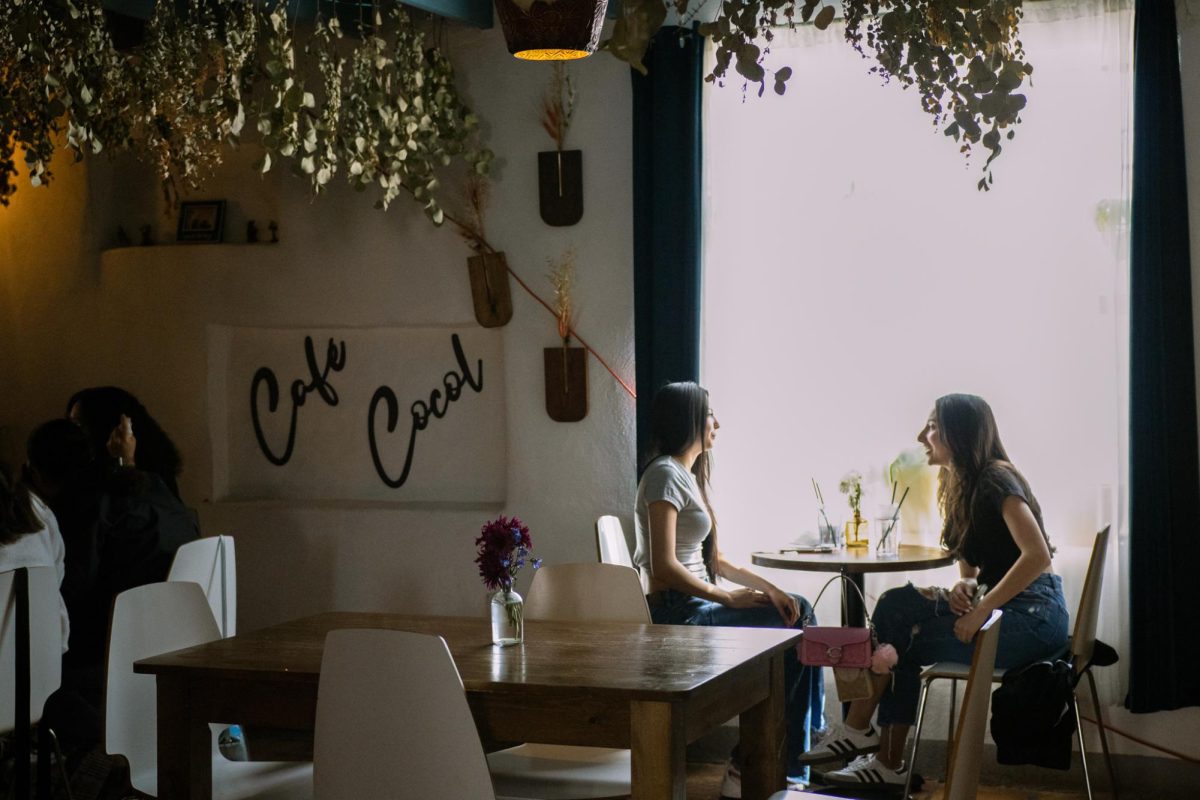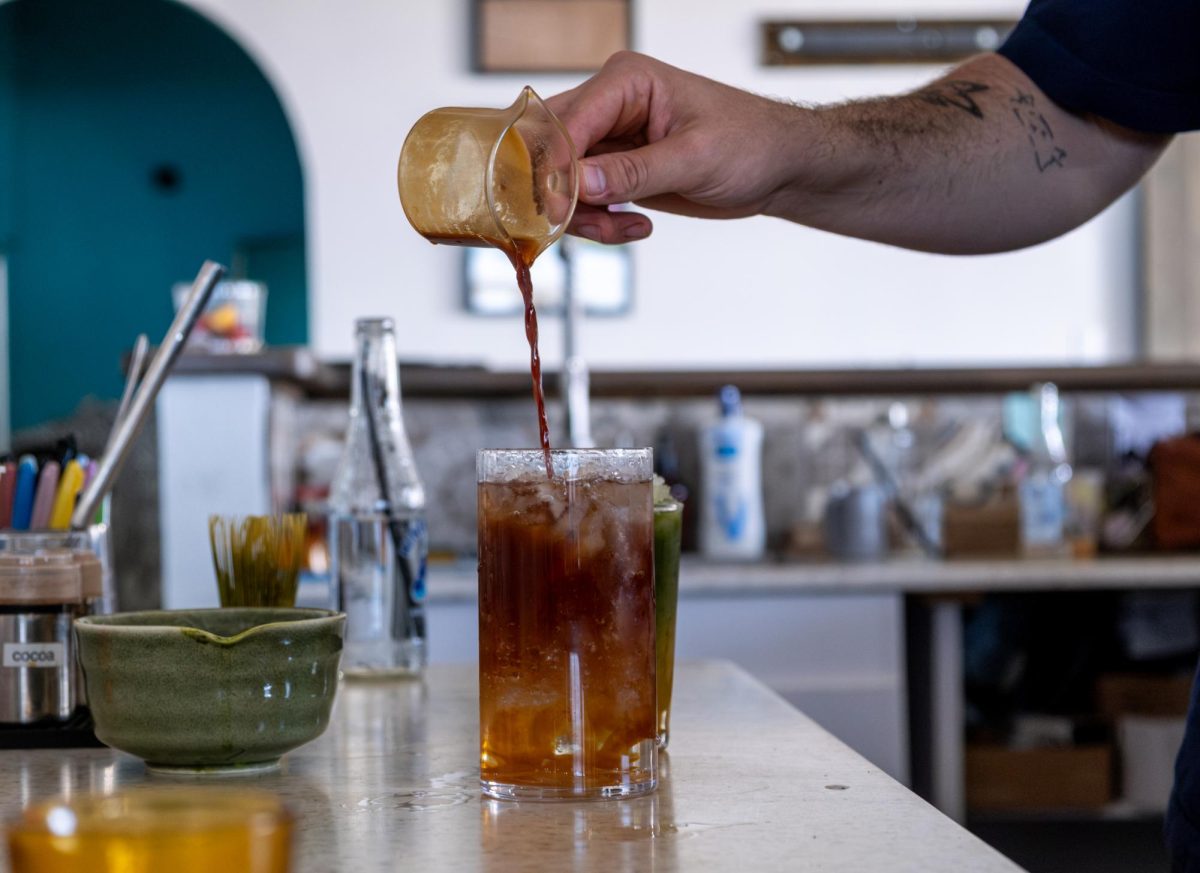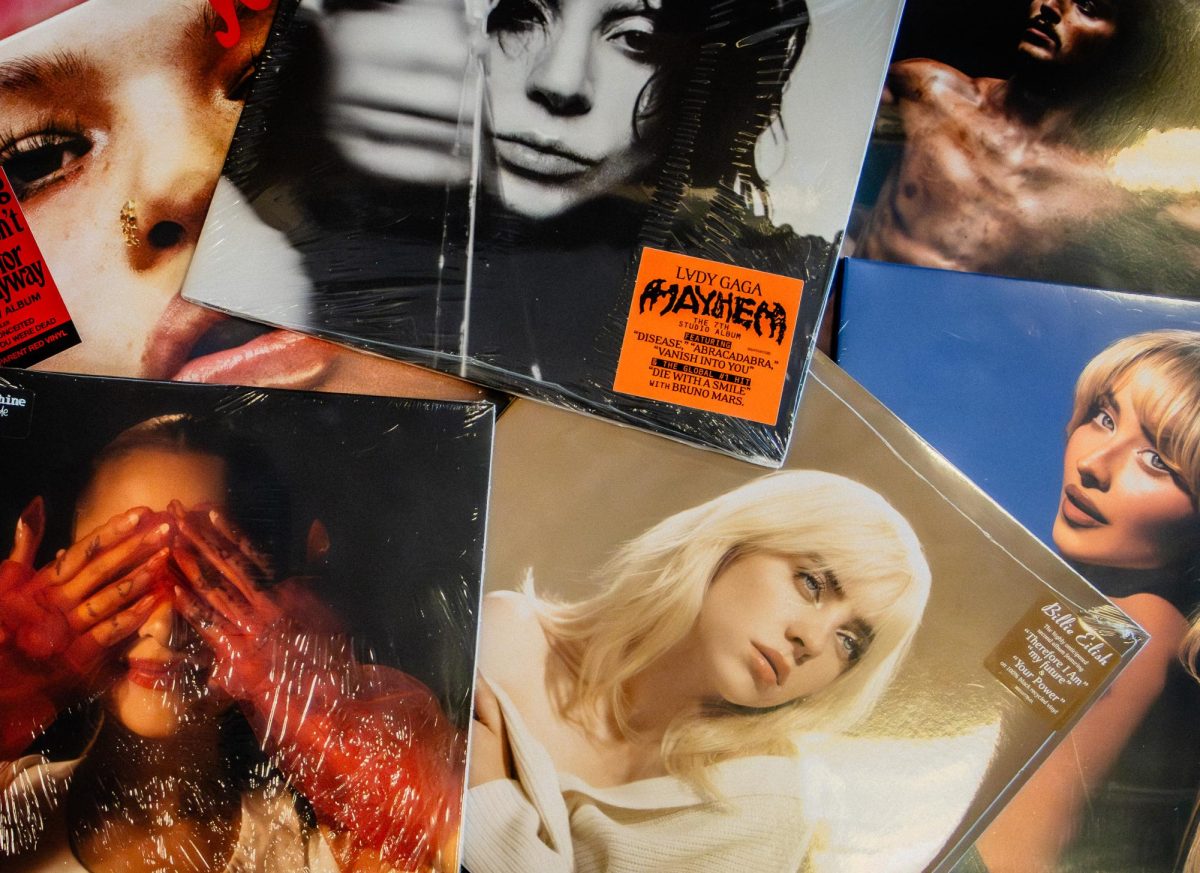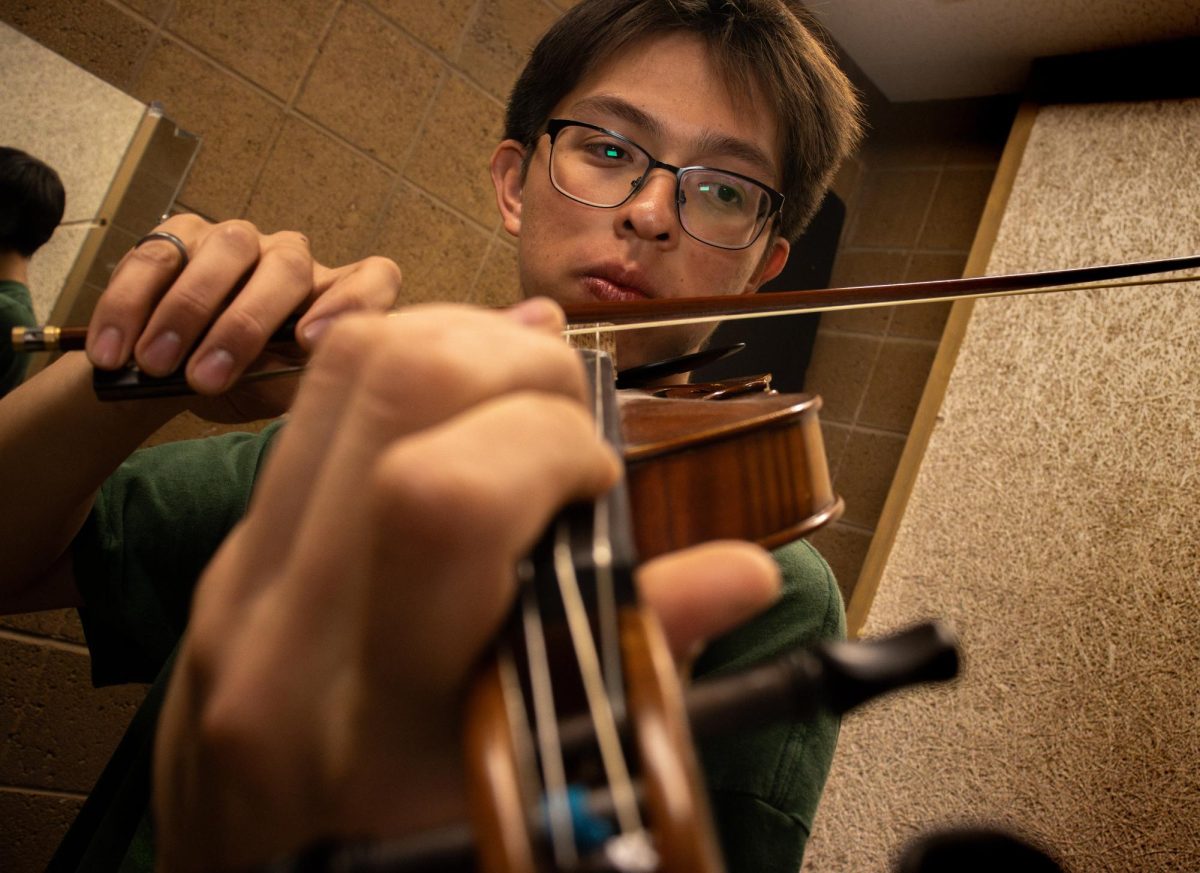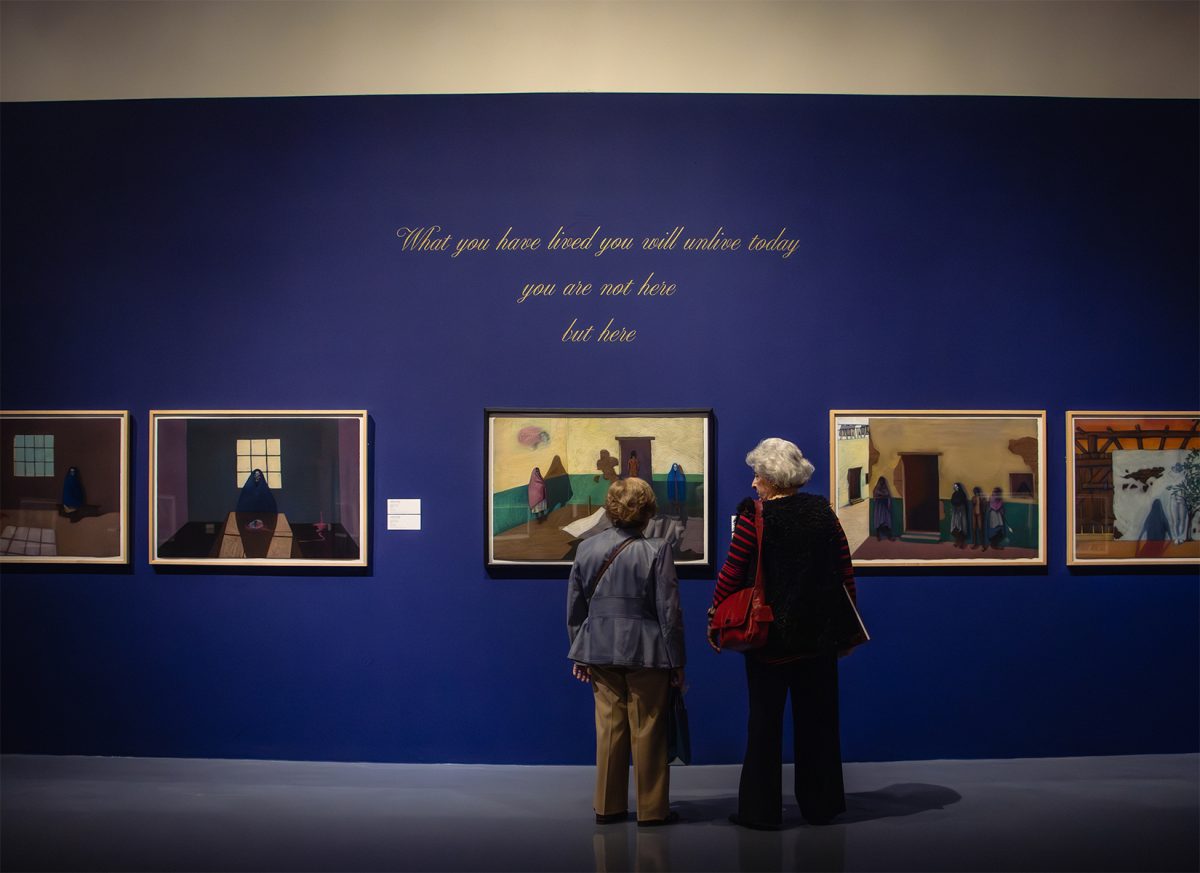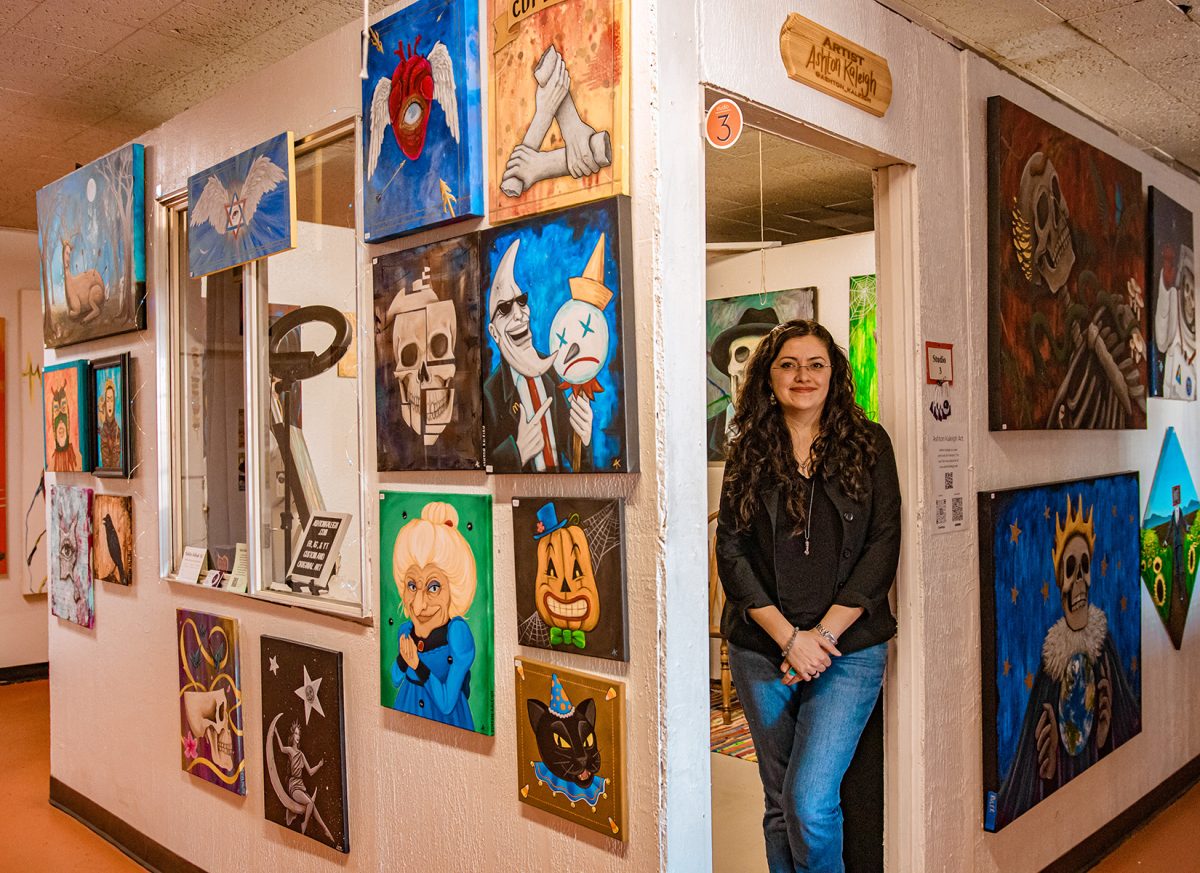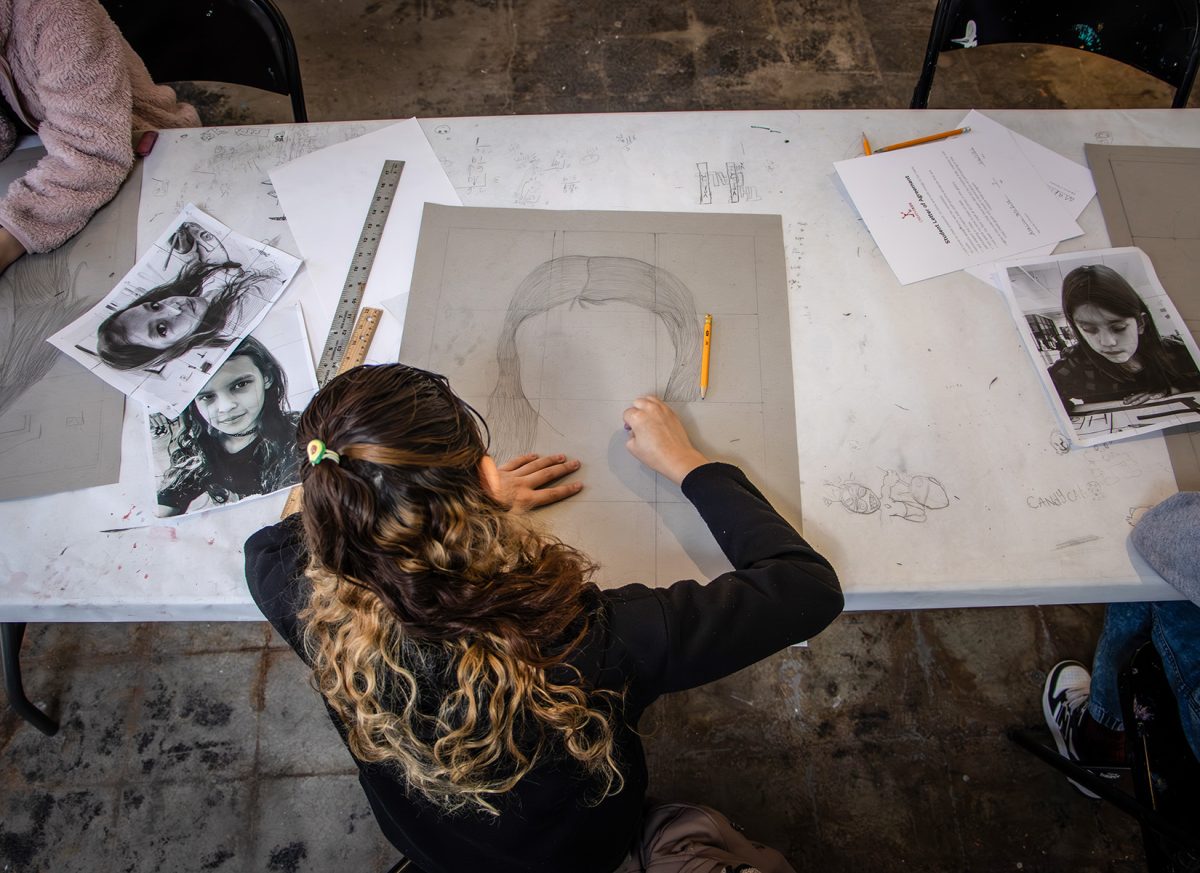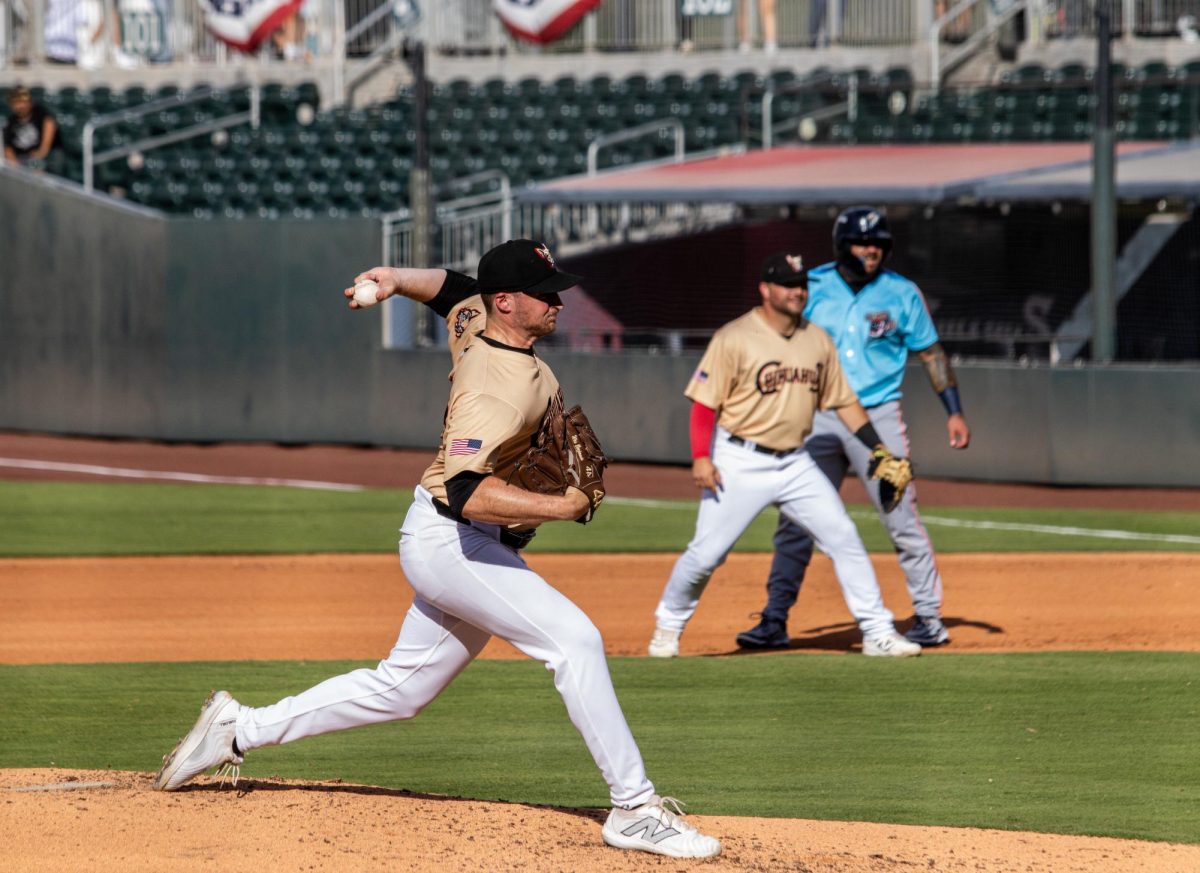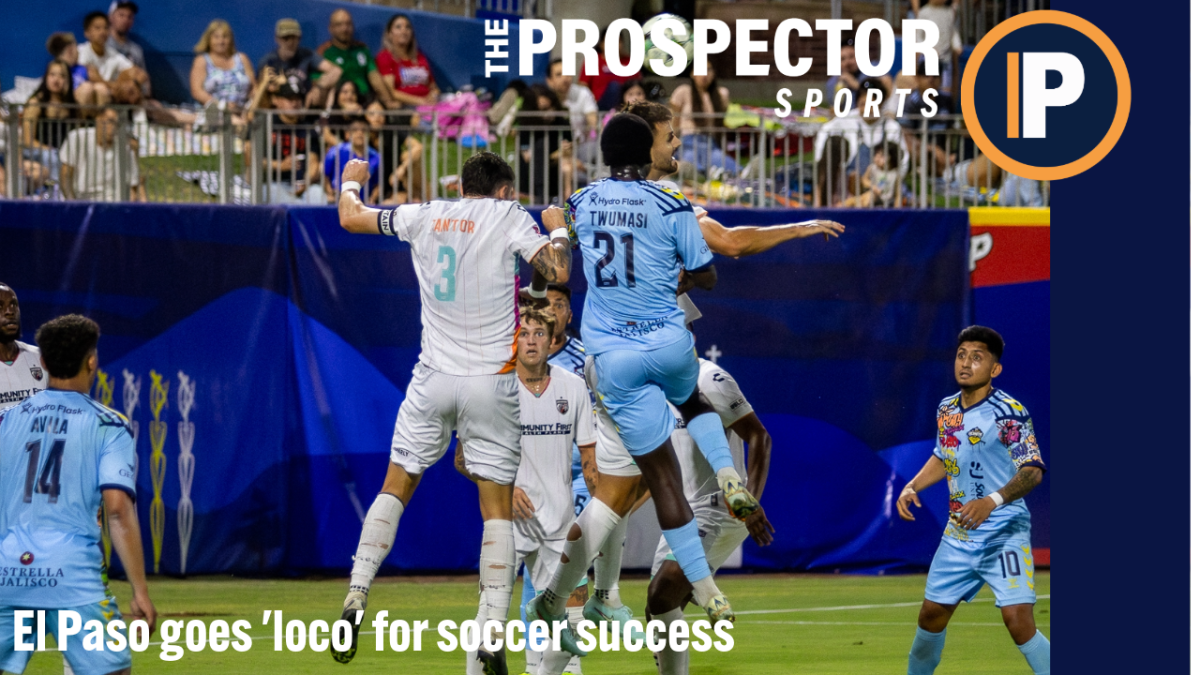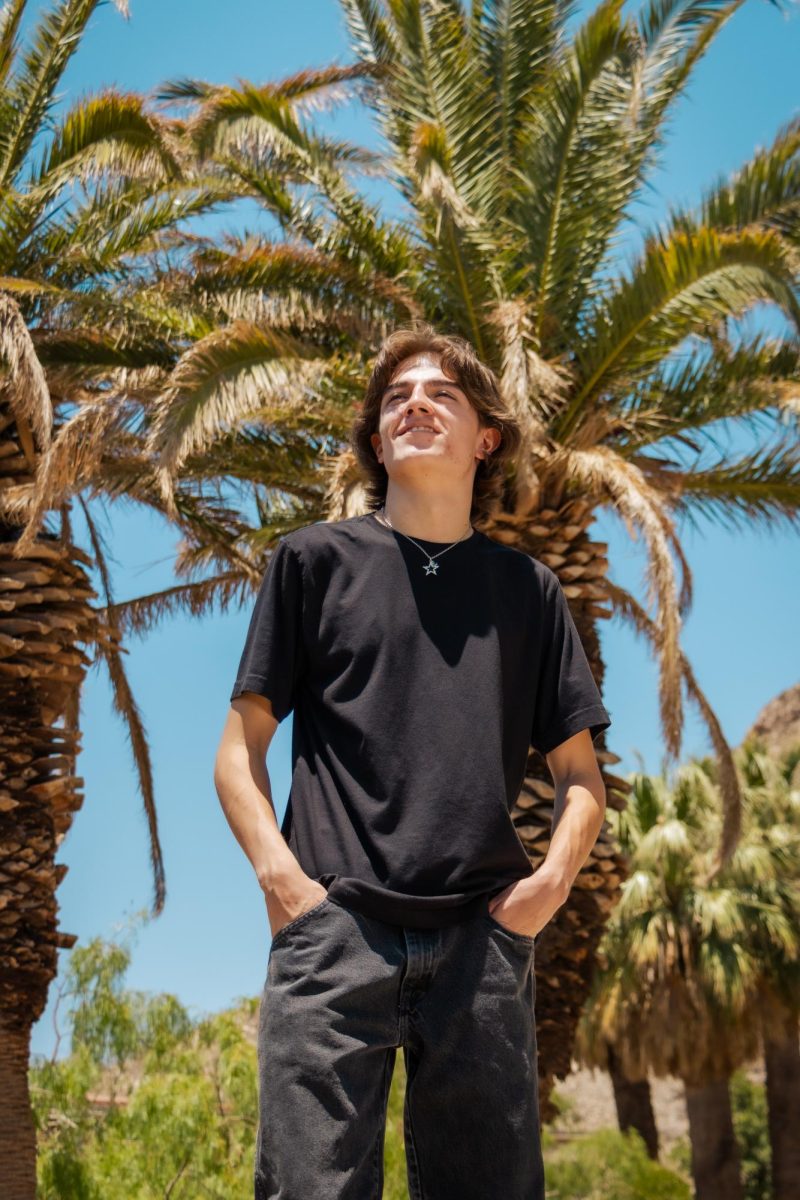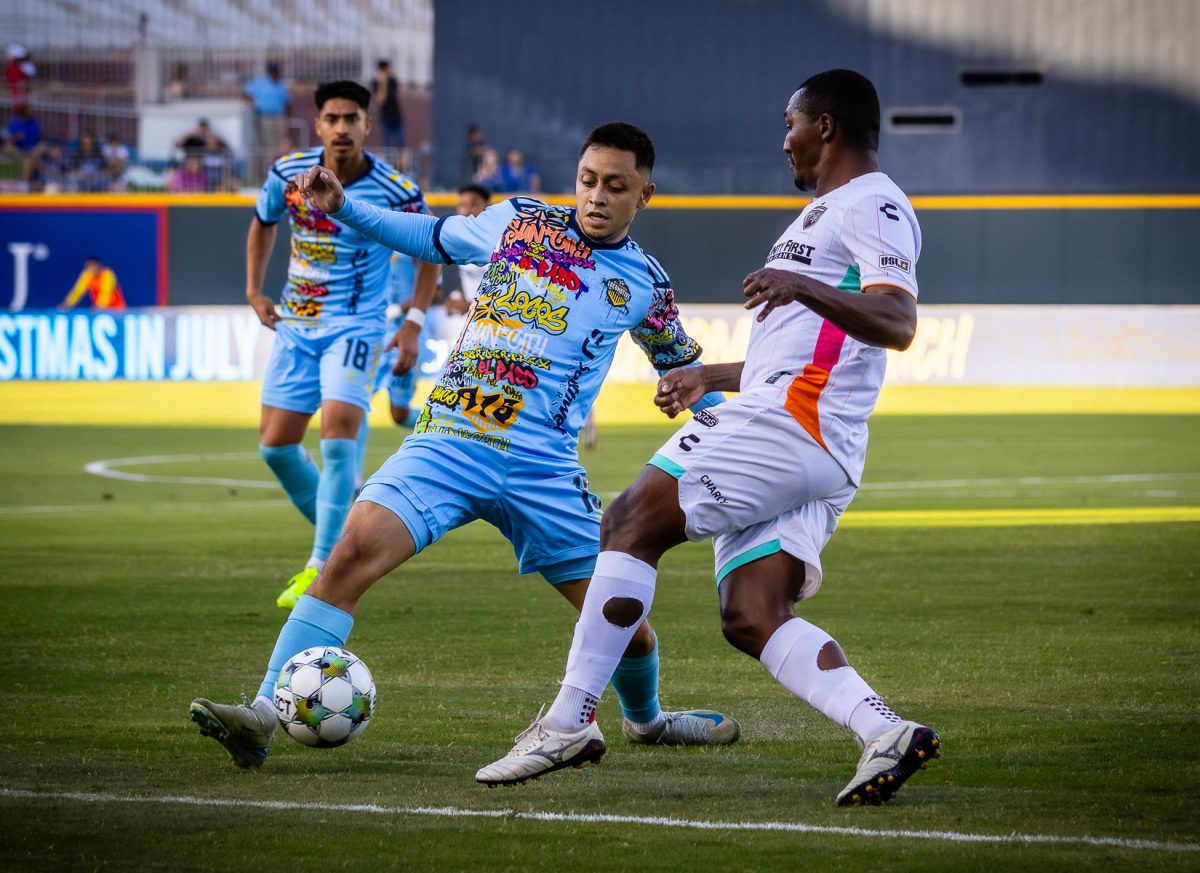There are many words to describe the sculptures made by Ho Baron. Eerie, elegant, bizarre and beautiful are just a few that capture the true essence of his work.
Born in Chicago in 1941, Baron moved to El Paso as a young child and considers the city his home. Throughout his life he has made many choices to live and see things in his own way, things that would help him fulfill a desire he did not know was there. The desire to create.
Located on the corner of Aurora Avenue. and North Piedras Street is Ho Baron’s Sculpture Garden. It is filled with “Gods of Future Religions,” as Baron calls them. Although he eventually decided to practice his interest in sculpting, Baron’s first passion was writing.
“I graduated with a master’s degree (in English), and I thought of myself as a writer,”Baron said. “I got into photography too. Photography and visuals. (For me visuals are a lot easier than writing (because) if you’re writing, it’s got to be said right.”
During his time exploring visual arts, Baron recalled his first introduction to that form of expression. He recalled living in a commune in New York City, and meeting a man whose craft caught his attention. The was into pen and ink drawing, which Baron wanted to try for himself. He recalled how he “picked up the pen and really liked the flow of the line.”
Baron’s time in New York City helped him discover a passion for art, but he did not just stop there. He lived in many places throughout his post-college years and met many people who served as mentors that pointed him in the direction of the arts.
“At one point I was living with a group of artists in Belgium. I was passing through Belgium, and I met some guy, some people who lived in a commune, an artist community, and they were cartoonists,” he said. “I stayed (with them for) about three years and I left for about a year, and then I came back. For (about) four or five years I was with them, and they had a kind of slogan, and their slogan was ‘Make Art,’ and I thought ‘that’s a pretty good thing to live by.”’
Following his introduction and immersion in art, Baron went through various mediums and tried multiple forms of art. It was not until his time in Philadelphia that he would experience sculpting firsthand.
“I was living in Philadelphia. I was a librarian, and I took a night class in sculpture. There was an old guy there, and we had clay, and we had to model his face,” Baron said.
After taking a sculpting class in Philadelphia and dealing with a new transition from his job as a librarian, Baron decided to come back to El Paso. He then studied art at UTEP while working for his family business, Dave’s Loans.
Though many might believe that sculpting was Baron’s full-time job, it was not. Aside from his day job at Dave’s Loans, he focused on sculpting because it was what made him happy and what helped him realize what his passion was.
“For some people, their passion is to play sports, or their passion is to get married and get a job and have kids, and no real plans,”Baron said. “I mean, a lot of us just kind of fall into situations. But what if you have a passion for something ? Maybe (you can find) some direction.”
Just by looking at Baron’s pieces, one can see the passion he speaks of. Sharp edges, distorted faces and no empty space on his sculptures can tell you the dedication he had in making them. Although some may think that Baron follows a particularstyle, like abstract art, he was delighted to say otherwise.
“My type of art is intuitive. I just make art and I don’t have any rules. It’s just what comes out,” he said. “I do figurative art. I do the figure, but I abstract it. I’m screwing around.”
Many of his works are displayed at his sculpture garden but they can also be viewed in his book, “Gods of Future Religions.” It is in his book that Baron explains the intent for most of his sculptures, which are mainly him poking fun at religion.
“So, I talk about at the beginning why I call my work gods for future religions, because I’m making fun of religion. I think religions are pretty silly,” Baron said . “So, when the world is tired of their exist-ing religions, I have a lot of little figures that I made and big figures, and they can worship my figures. What’s the difference? One figure in another. Satire.”
One example of his main theme for his work can be seen in his sculpture, “The Water God,” which he created after witnessing a multitude of Buddhas in Asia. “The Water God” is a “god” that was made as the bringer of water, for a desert city. With many meanings, “The Water God” represents eternal water for the people of El Paso and Ciudad Juárez. The tongues protruding from the faces represent anguish, greed and thirst, while the black spheres perched upon the tongues represent the people’s attempt at balance.
Like “The Water God,” Baron has many other projects that have backstories which carry the same satirical approach towards religion. His last sculpture was completed over a decade ago and since then Baron has been preparing for retirement. Since 1979, Baron has sculpted over 300 figures and has estimated that over half a million dollars were spent on his endeavor. Some of his art pieces were selected to adorn entrances to libraries and art museums outside and around El Paso, but he still carries some of his earliest projects at his own sculpture garden.
Though his career and sculpting have come to an end, his pieces will leave a legacy on the people around him and other art lovers for years to come.
Elisha Nuñez is a staff reporter and may be reached at [email protected].

